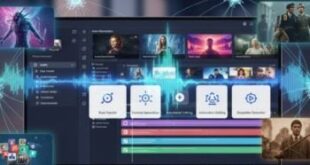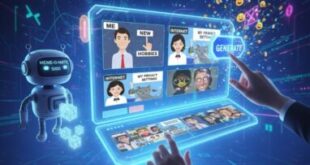By Bob Chopra, Founder, IvySchool.ai (a 9-year-old tech entrepreneur)
When I first heard the words Artificial Intelligence, I imagined robots that could talk, think, and maybe even dream. But when I started learning how AI actually works, I realized it’s not magic — it’s logic. It’s about teaching computers how to reason, make choices, and sometimes even learn from mistakes.
Harvard’s Introduction to Artificial Intelligence Using Python is one of the best ways to understand all this. It’s not a class where you just memorize code or copy examples. It’s more like learning a new way to think — like teaching a computer how to think with you.
1. Learn a Little Coding Before You Start
Python is the main language we use in the course. It’s simple, almost like writing English, but it still takes practice. If you already know what a loop or a function is, the lessons will feel easier. I started by writing small programs that could guess a number or print funny patterns — just to get comfortable. When I reached the Harvard lessons, I could focus on the ideas instead of worrying about missing commas or brackets. Learning to code is like learning to ride a bicycle. You wobble a little in the beginning, but once balance kicks in, you can explore anywhere you want.
2. Think Like a Detective
AI isn’t just about computers — it’s about solving puzzles. Every project starts with a question: What is the best way to make this work? Then you collect clues — the data — and try different strategies until one fits. The fun part is that there’s not always one right answer. Sometimes, two models can both be “smart,” but in different ways. That’s when you learn to compare, test, and improve — like a scientist, or a detective with code.
I’ve learned that curiosity is more powerful than speed. Asking why something happened matters more than getting it right the first time.
3. Don’t Be Afraid to Make Mistakes
The first time my code didn’t work, I felt frustrated. Then I realized that even the smartest AI systems make errors millions of times while learning. Every bug is a hint about what you misunderstood. Once I stopped being scared of mistakes and started reading error messages like clues, everything changed. Now, fixing bugs feels like leveling up in a game — you get stronger every time. Sometimes I spend an entire evening fixing one problem. But when it finally works, it feels like fireworks in my head. That’s the moment I remember why I love AI.
4. Focus, Patience, and Curiosity
You don’t need to type super fast to learn AI. What matters more is how long you can focus. Sometimes I spend an hour just trying to make one idea work. But curiosity keeps me going. I like reading about how AI helps doctors, or how it powers games and space exploration. The more you connect what you learn to real life, the more exciting it becomes. AI isn’t just about machines — it’s about understanding how thinking itself works. Each project teaches you a little bit about computers, and a little bit about yourself.
5. See the World Differently
By the end of the course, I didn’t just learn programming — I learned a new way of seeing things. I started noticing patterns everywhere: how traffic lights follow rules, how recommendations appear on my tablet, how even my brain uses “if-else” logic sometimes.
AI teaches patience, precision, and imagination. It’s like learning the secret language of intelligence — not just for computers, but for people too. Once you start thinking this way, you can’t unsee it. The world becomes a classroom full of algorithms.
What I Learned
If you’re in India and thinking about learning AI, don’t wait for college. Start now. Harvard’s course is tough, but it’s worth it. You’ll discover that intelligence isn’t about being the smartest person in the room — it’s about being the most curious. When a computer learns from its mistakes, it becomes better. When we do the same, we become wiser. That, I think, is the real meaning of Artificial Intelligence — learning how to learn.
 Newspatrolling.com News cum Content Syndication Portal Online
Newspatrolling.com News cum Content Syndication Portal Online







